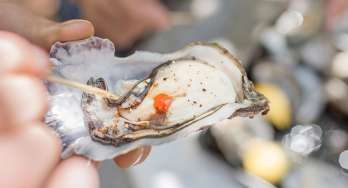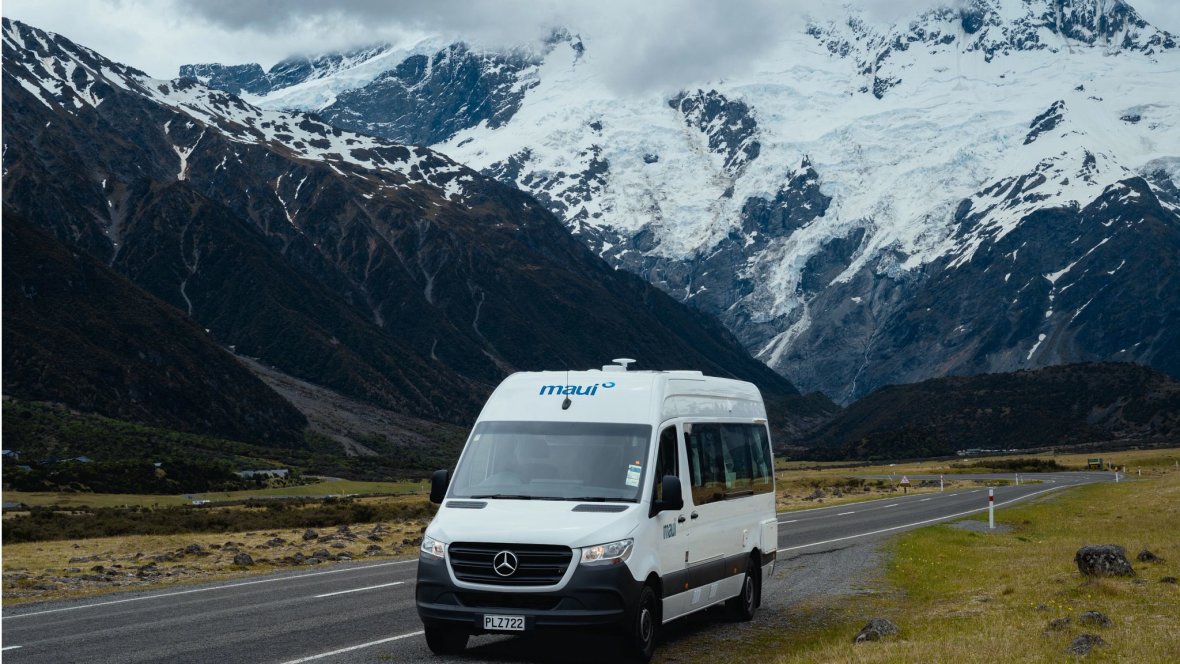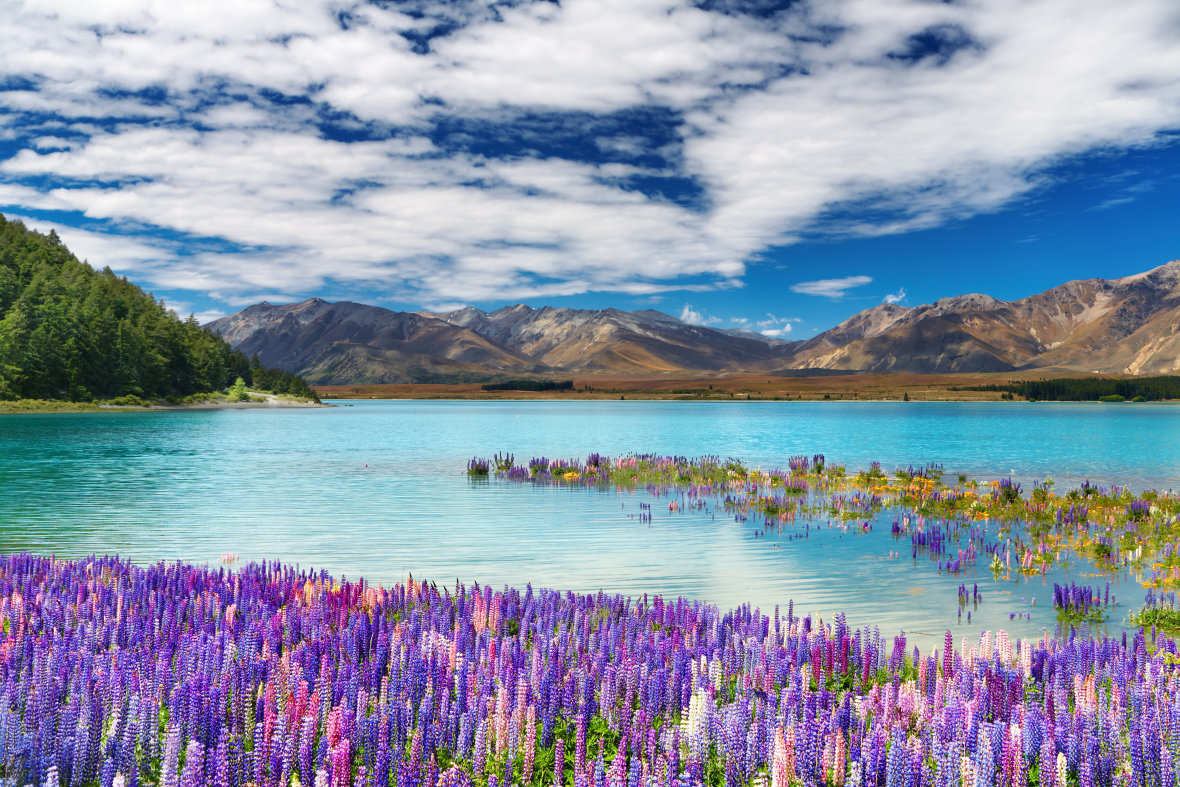Summer in New Zealand: December to February
Long, bright days and warm seas define summer, making it ideal for bayside motorhome camping and late sunsets. Most of the country sees settled, dry weather, especially on the east coasts of both islands. Ideal summer activities include:
-
Swimming and snorkelling at beaches in the Coromandel, Bay of Islands, Abel Tasman, or Golden Bay
-
Walking part of a Great Walk like the Abel Tasman Coastal Track or Tongariro Northern Circuit
-
Visiting open-air markets and food festivals
-
Enjoying seasonal produce like cherries, stone fruit, and fresh corn
-
Taking a boat cruise or kayaking trip in places like Milford Sound or the Bay of Islands
Demand is highest at this time: visitor arrivals peaked at 469 800 in December 2024. Campsites, ferry sailings, and popular Great Walk huts therefore sell out quickly. Lock in bookings several months ahead, especially if you’re planning popular summer routes like the Top of the North itinerary or the scenic Middle Country route that takes you from Nelson lakes up to Wellington.
Autumn in New Zealand: March to May
Autumn offers warm, settled weather and reduced crowd levels. The peak summer rush begins to ease in March, but the weather usually stays warm and settled, especially in the North Island and inland areas of the South Island. That makes it a great time to explore at your own pace, with fewer crowds and more availability at campgrounds and attractions.
You’ll still get plenty of daylight for road trips and walks, with average highs around 22 °C in March in the north, dropping to around 12 °C by May in southern regions like Queenstown. Nights do start to cool down, so pack extra layers. Why this option is a favourite with travellers:
-
Fewer crowds at popular spots like Milford Sound, Rotorua, and Lake Tekapo
-
Lower motorhome hire rates compared to peak summer
-
Incredible autumn colour in regions like Arrowtown, Central Otago, and the Southern Lakes
-
Great conditions for walking, especially in drier inland areas
-
Compared to spring, autumn is generally calmer weather-wise. You’re less likely to get the strong gusts that are common in places like Wellington in September and October.
March provides summer-like conditions with lower visitor volumes than peak holiday periods. You can swim at the beach in the North Island one day and walk a bush track in peace the next. By late April and into May, things turn more autumnal. The hills and valleys around Queenstown and Wanaka are full of gold and burnt orange leaves, and vineyards buzz with activity as harvest reaches its peak. Many DOC and holiday park campsites are quieter in autumn, and that means more freedom to stay an extra night somewhere you like,
Winter in New Zealand: June to August
Winter in New Zealand transforms the landscape, especially in the South Island, where snow settles on alpine peaks and ski towns buzz with energy. It’s also the quietest time of year for travel, meaning fewer crowds and more flexibility and more campsite availability.
The climate is relatively mild compared to many other countries at similar latitudes. The North Island has cooler, wetter days, while inland South Island regions like Queenstown, Tekapo, and Central Otago get cold nights, clear skies, and dry conditions. Why this option is a favourite with travellers:
-
Ski season in Queenstown, Wanaka, Methven, and the Central Plateau (Whakapapa and Tūroa ski fields)
-
Snow-capped views of Aoraki / Mount Cook, Fiordland, and the Southern Alps
-
Stargazing under clear winter skies in Tekapo, Wairarapa, and Great Barrier Island
-
Fewer crowds and quieter roads, especially outside the July school holidays
-
Hot pools and thermal spots like Hanmer Springs, Rotorua, and Lake Taupō
July is usually the coldest month, and ski fields are in full swing by then. Winter is also a great time for soaking in hot pools, walking quiet tracks, and enjoying wildlife. You’ll need to pack warm layers, but you’ll be rewarded with crisp air, beautiful light for photography, and the freedom to take your time. If you’re happy to avoid some of the higher alpine passes during snowfalls, a winter road trip offers a unique and peaceful take on New Zealand.
Spring in New Zealand: September to November
Spring in New Zealand is full of contrast. Snow still lingers on mountain tops while lambs and wildflowers appear in the valleys. It’s a season of renewal, with longer days, rising temperatures, and a noticeable shift in energy after winter.
It’s also shoulder season, which means you’ll find better prices and more availability at campsites. While the weather can be unpredictable (you might get four seasons in a day), the increasing daylight and blooming landscapes make it a rewarding time to travel. Why this option is a favourite with travellers:
-
Wildflowers and blossoms are in full display, especially lupins around Lake Tekapo from mid-November
-
Newborn lambs and calves in paddocks throughout the country
-
Longer daylight hours for sightseeing, with sunset after 7 pm by October
-
In Fiordland and around the Southern Alps, waterfalls reach peak flow due to seasonal snowmelt
-
Less crowded trails and towns, especially compared to summer
-
Excellent white-water rafting in rivers like the Rangitata and Shotover fed by spring melt
Late spring also marks the beginning of the Great Walks season. Tracks like the Routeburn, Kepler, and Milford officially reopen for bookings in late October. You’ll still need to prepare for changeable conditions in alpine areas, but the rewards are huge with cascading waterfalls, lush greenery, and more space to yourself on the trail.
How weather changes between regions
New Zealand sits between 34° S and 47° S, so climate differences from tip to tail are noticeable.
-
Northland and Auckland: Warm, humid summers above 23 °C, with sea swimming viable into April. Showers arrive in short bursts, rarely lasting all day.
-
Central North Island: Cooler nights year-round thanks to elevation, yet geothermal areas provide natural hot-pool relief. Winter roads around the Desert Road can close briefly after snowfall.
-
West Coast of the South Island: Highest annual rainfall in the country, creating lush rainforest and frequent rainbows. Mild winter temperatures mean glaciers can be viewed comfortably in July.
-
Southern Lakes and Central Otago: Hot, dry summers around 26 °C, cold winters near or below freezing. Four distinct seasons make it popular for autumn colour photography and spring blossom festivals.
Putting it all together
There is no single “best” time to visit New Zealand. Instead, match your priorities to the country’s natural rhythms:
-
Chase summer if you love swimming, farmers’ markets, and buzzing seaside towns.
-
Embrace winter for skiing, quieter hiking trails, and value-packed motorhome hire.
-
Opt for spring or autumn when you want balanced weather, vibrant landscapes, and space to linger in the shadow of volcanoes or fjords without rushing.
-
Spring and autumn also offer ideal weather for exploring parts of Ngā Haerenga, the New Zealand Cycle Trail, with cool mornings and long, dry days making it easier to enjoy multi-day rides like the Otago Central Rail Trail or the Timber Trail in the central North Island.
-
Learn more about the benefits of off-season travel in New Zealand in maui’s guide - the top 5 reasons to travel off-peak in New Zealand.
Travel Between The Islands
Travelling between towns and cities is one thing but travelling between islands is quite different. Luckily, the Interislander Ferry is a really convenient way to continue the trip with your motorhome. You can catch the ferry from Wellington and set sail to Picton in New Zealand’s South Island. The sail to the South Island is just as spectacular as the end destination. Be sure to head out on deck when crossing through the Marlborough Sounds and soak in the incredible views. Once you arrive in Picton, embark on the scenic coastal drive down south. Alternatively, fly to any one of our maui New Zealand branches to pick up your motorhome and choose your own adventure.
Planning your motorhome adventure with maui
maui depots operate in Auckland, Christchurch, and Queenstown. Wherever you roam, keep drive times realistic. Two-lane highways twist around mountains and lakes, and scenic lookouts invite frequent photo stops. A rule of thumb is to limit yourself to driving around 3 hours a day so you arrive at campgrounds well before dark. The best thing about a motorhome holiday is the ability to call the shots and plan a holiday that’s tailored to your interests. Check out our get inspired hub for popular routes, travel tips and guides to the best destinations to start building your itinerary now.
Book your maui motorhome today. Or see our latest deals and specials.
.jpg)




